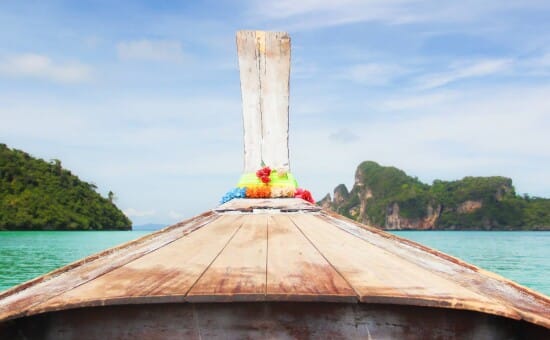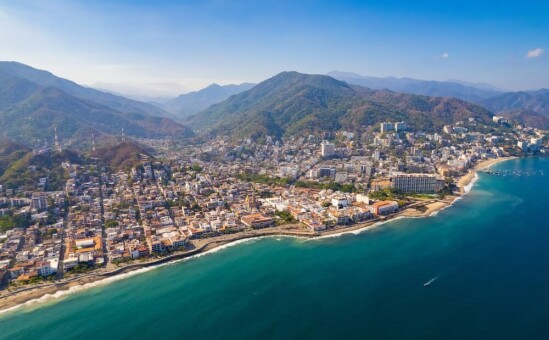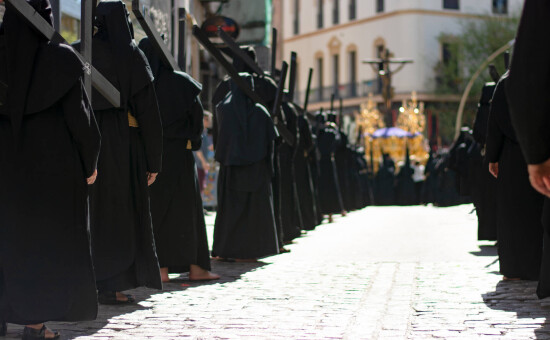The train from Bangkok to Phitsanulok: A traveler review
Toying with the idea of riding the train from Bangkok to Phitsanulok? Dive in, experience a vicarious thrill before setting off on this fabulous journey.

Taking MRT’s exit number 2 into Hua Lamphong station, I stopped to think: What lies in store for me on this trip?
Skinny, frail and homeless old men lay in the dirt near the escalators. Desperate taxi touts beckoned me over, and mask-wearing employees trained their thermo guns at people’s foreheads, urging them to use the sticky blue hand sanitizers before entering the concourse.

It was a fine time to travel from Bangkok to Phitsanulok amid COVID-19 outbreak, but I’d come here of my own volition. I figured I was safe as long as I was wearing my shades plus a face mask and using a sanitizer often.
I’d booked my train ticket online, which was a breeze. A bit cumbersome, though, was the fact that Thai Sriram – the tour operator – insisted I pick up the printed ticket at their office before starting my journey. I don’t blame you if you consider this pointless.
On a lighter note, their office is a stone’s throw from Phra Arthit Pier, Rambuttri Alley and Khao San Road – the renowned backpacker street and movie location in Bangkok. If a vibrant neighborhood is your thing, check out this street when you collect your printed ticket.
I pushed the button of the sanitizer dispenser, rubbed the viscous gel all over my hands, and entered Hua Lamphong that impressed me with its wide open space, half-dome roof and stained glass windows.

Guardedly excited, I was ready to set off on a trip to Thailand’s north.
Finding my train
It’s huge inside Hua Lamphong, but the waiting hall that’s filled with rows of seats was half-empty now due to coronavirus. A number of orange-robed monks sat there, radiating calm. It was peacefully quiet aside from the loudspeaker and its echo announcing train departures in the wide hall.
Missing the train is not an issue here – provided you arrive on time. There are two electric display boards in both English and Thai which feature real-time departures and arrivals as well as delays and platform numbers. If you’re at a loss, there’s an information desk. Since I already had a ticket, I didn’t need to buy one at the numerous counters and could proceed to the platform right away.
Walking through an arched gate below the vigilant eyes of Siam’s former King Chulalongkorn reminded me that this station is more than 100 years old. It’s probably due to Hua Lamphong’s creaking infrastructure that nearly all trains will operate at Bang Sue next year. Most parts of this iconic train station will be turned into a railway museum in 2021, but some rolling stock will keep running here for a while.

Meanwhile, wistful railway buffs can enjoy the viewing gallery above the main hall. It’s perfect for shooting photographs of the station’s ever-shifting natural light and its budget-conscious travelers.
Looking for my platform, I felt as though I’d just come out of a time machine, hurled into a world where riding a train was a real adventure.
Ticket collectors were wearing khaki uniforms, police-defying whistles announced imminent departures, doors slammed and hissing locomotive sounds filled the tremendous hall. Rolling stock creaked as yet another train pulled out of the old station, and arriving trains came to a grinding halt, billowing clouds of hazy diesel smoke.
Gazing at my surroundings
Residents as well as backpackers in their thirties crawled out of rickety carriages, breathing in the hot humid Bangkok air. Needless to say, there was no air conditioning on the super long-distance platforms that are partly open-air. I’d found mine quickly because there are visual platform displays at the start of each track.
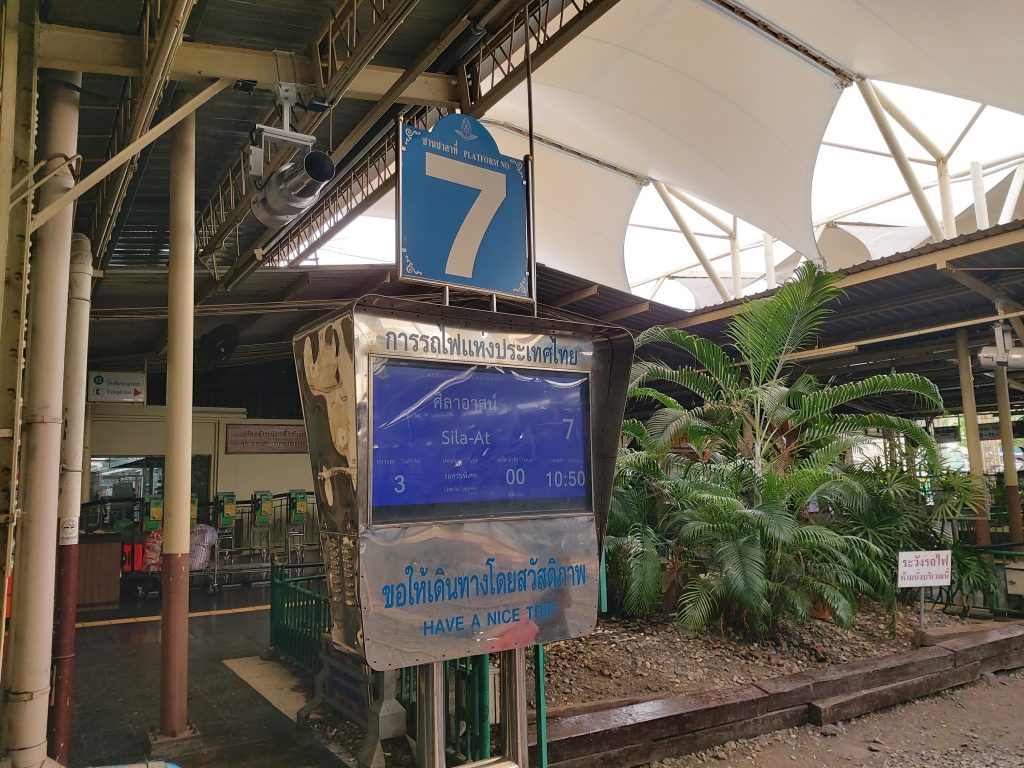
As the departure time neared and my stomach growled, I regretted not having bought some spicy beef balls or exotic fruits from a street vendor. There’s also a 7-Eleven outside, but there was simply no time to stock up on last-minute snacks. I’d arrived at the station twenty minutes before 10:50am – the scheduled departure time.
There was no commotion; platform 7 from which my train was supposed to leave wasn’t crammed with people. It was a poignant reminder of this so far unfortunate Year of the Rat carrying a pesky virus. There were a few stray hawkers selling Thai snacks at the tracks, but I didn’t fancy any of the nibbly-dibblies they offered and sat down on a bench.
Hearing my seatmate coughing, I adjusted my face mask and was hoping for the train to arrive soon. The “Special Express” was delayed, though the visual display hadn’t been updated when I arrived. Killing time, I’d have loved to watch the hairdressing students giving free haircuts to the poor, but didn’t spot any.
The train rolled into the station at 11:05am, and out of the blue, there they were – the young travelers keen to embark on an adventure.
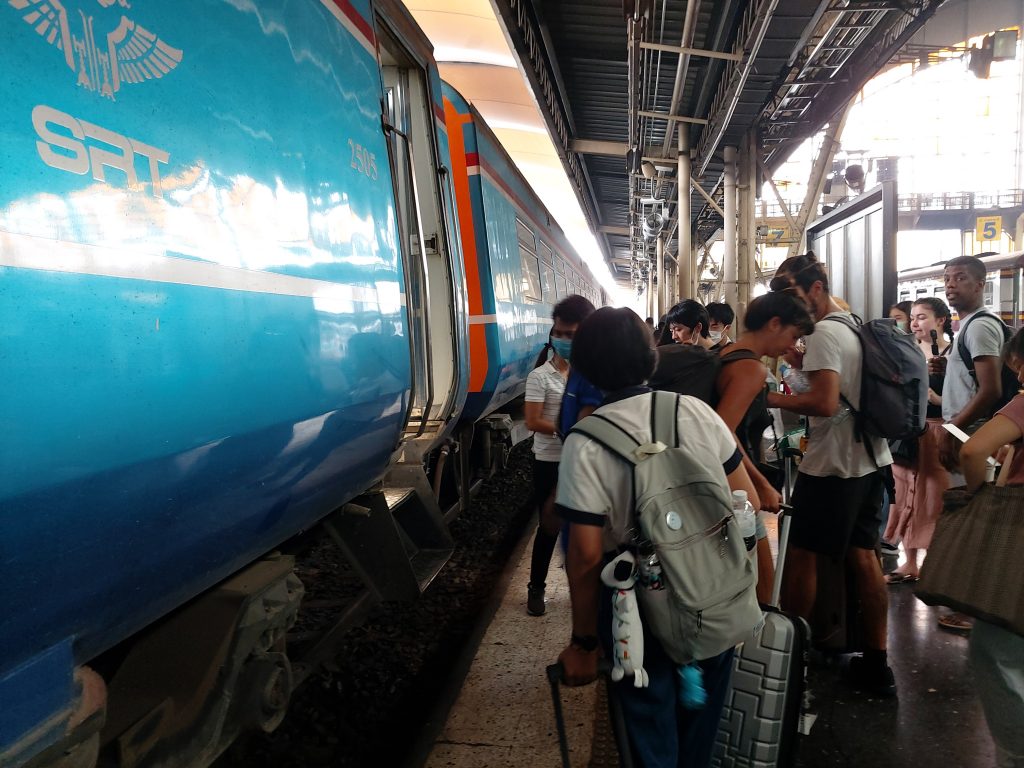
Station workers checked people’s printed tickets before letting them climb into the carriages, and fastidious conductors ushered them to their numbered seats.
I was lucky to have gotten a window seat on this train number 3. This Special Express offers 2nd class sprinter DMUs – air-conditioned, diesel multiple-units with seats comfy enough for a 5-hour ride. Mine wasn’t properly fixed though – I could move it a bit – and was slightly worried it may collapse.

The carriages feature overhead luggage racks that offer space for bags and backpacks. If you’ve got a bulky suitcase, you’ll have to find a place near the doors where several may fit on the storage compartment. In 2nd class, you’re entitled to bring 40kg luggage per passenger, though nobody will weigh your belongings before boarding the train.
The air-conditioning was a bit too cool – I had to wear a hoodie – and it wafted the scent of alcohol sanitizer gel through the air. Mai pen rai – it didn’t matter – I was eager to travel.
Heading north
A whistle was blown, the rail vehicle tooted, and the wheels started to grind themselves forward at 11:13am.
As the train gathered speed, I watched the city rolling past. It was enveloped in a dreary gray and matched the sight of ramshackle huts with tin roofs.
A moment later, a hostess served rice with chicken turmeric to people’s seats; soft drinks, banana crisps and a yummy Thai dessert called khanom pia as well – all free of charge.

Free was also the fairly decent restroom in the carriage. I don’t remember if it was one of those old open toilets that empty directly onto the tracks, but the bum gun with hot water and the soap were great.
As the rolling stock wound its way north, passing through rice fields in the Nakhon Sawan province, I enjoyed the smooth ride. Looking out the window rewarded me with mesmerizing sights such as a golden, roughly 20m-high Buddha.

There weren’t as many rubber trees as in Thailand’s south, but I did spot a few. I also noticed the ever-changing colors as the train wended its way north like a slithering snake. The grass was greener towards Phichit and Phitsanulok, both literally and proverbially. I could tell by the happy looks of the brown and white buffaloes that weren’t as skinny as those in the southern provinces.
Stepping off the Special Express in Phitsanulok at 4:25pm, I breathed in the less polluted air and looked forward to ageless temples that were bound to knock my socks off.


